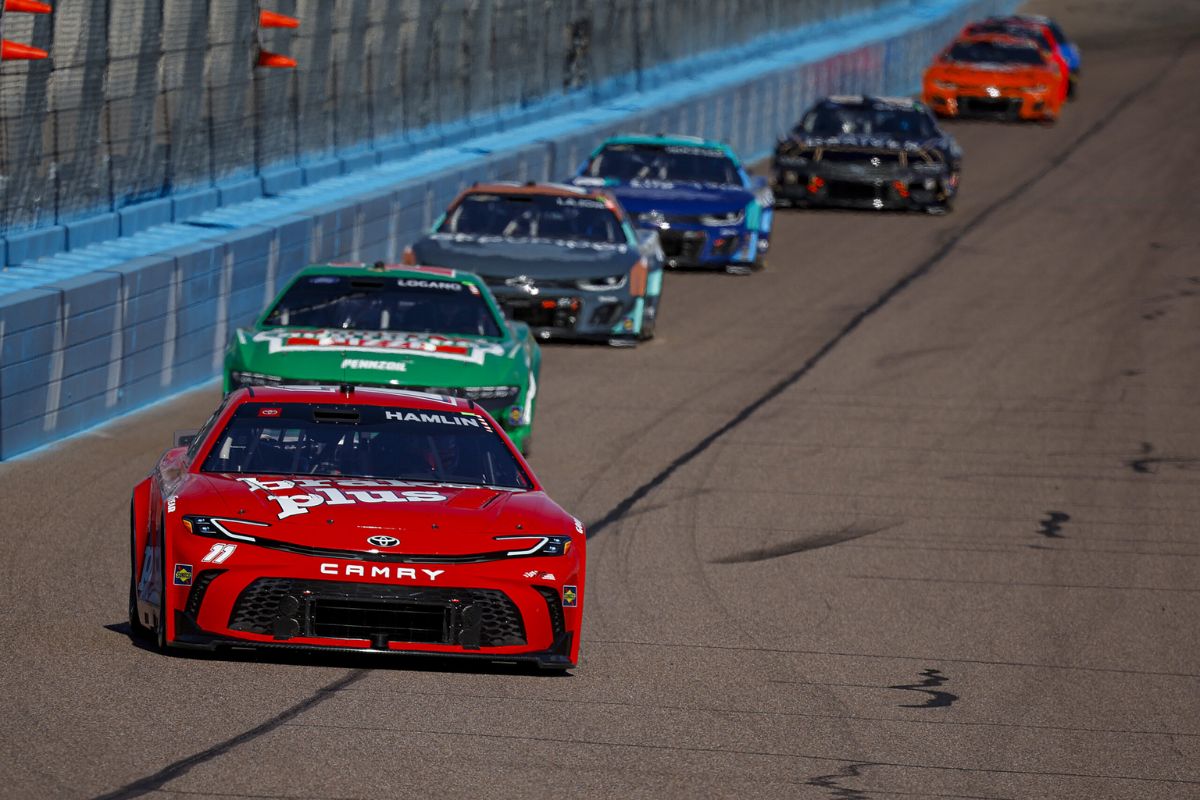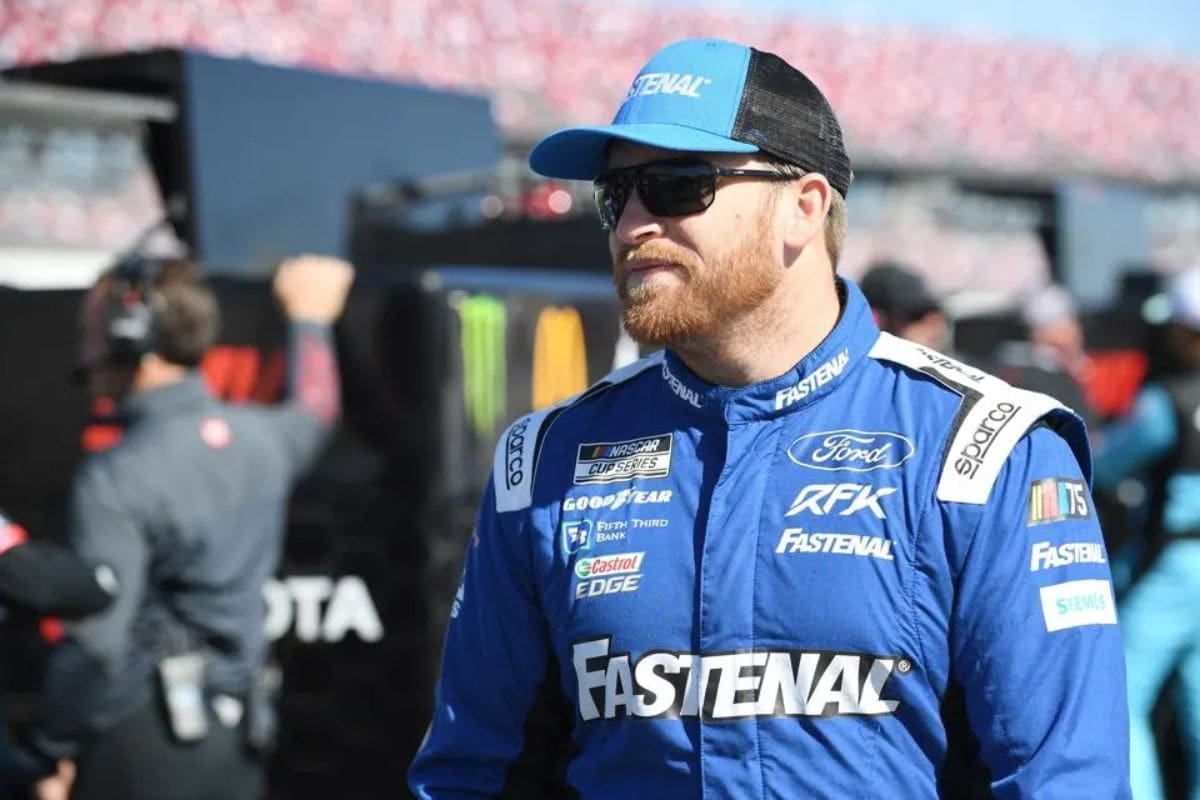Brad Keselowski Rages Against Goodyear: Brad Keselowski‘s recent outburst regarding Goodyear’s tire performance during the Cook Out 400 highlights a critical issue within NASCAR: the dependency on tire reliability for competitive success. His frustration, articulated through the question, ‘What the hell is going on?’ not only reflects his personal challenges on the track but also suggests a broader systemic problem between teams and tire manufacturers. This incident raises significant questions about tire strategy, communication, and the implications for RFK Racing‘s playoff prospects, particularly for Chris Buescher. What does this mean for the future of the sport?
Key Highlights
- Brad Keselowski expressed frustration with Goodyear’s tire performance, questioning their reliability during the Richmond race.
- He highlighted significant performance disparities between himself and competitors like Daniel Suarez, who excelled with the option tires.
- Keselowski called for clearer communication between teams and tire manufacturers regarding tire performance and strategy.
- His struggles with traction and tire degradation led to disappointment, finishing outside the top 15, impacting playoff positioning.
Overview of the Cook Out 400
The Cook Out 400 at Richmond Raceway presented a unique challenge for teams as they navigated the complexities of tire strategy in a race characterized by its short track dynamics and unpredictable weather conditions.
Anticipation surrounded the event, primarily due to the introduction of the Goodyear option tire, a softer compound touted for its improved grip but also shrouded in uncertainty regarding performance on the tight confines of Richmond’s 0.75-mile oval.
Initial conditions forced teams to adapt quickly, with wet weather tires deployed at the race’s onset, setting a precedent for a constantly changing strategy landscape. As the race progressed, the performance of the option tires came under scrutiny. Their potential to provide competitive advantages hinged on multiple factors, including track temperature, tire degradation, and the drivers’ adaptability to changing grip levels.
The short track’s limited overtaking opportunities further complicated the decision-making process, as teams had to weigh the risks of utilizing a tire compound that could either boost speed or lead to premature wear. The unexpected nature of the option tire’s performance ignited a competitive dialogue within the garage, with teams scrambling to optimize their approach amid fluctuating track conditions.
Brad Keselowski’s Struggles with Option Tires
Brad Keselowski’s challenges with the option tires during the Cook Out 400 highlighted a significant disparity in performance compared to his competitors, prompting an urgent search for answers regarding the issues plaguing his No. 6 Ford Mustang.
As drivers like Daniel Suarez took advantage of the benefits of the option tires, moving from the back of the pack to lead the race, Keselowski’s struggle became increasingly apparent. His inability to gain traction and position left him frustrated and questioning the tire performance.
The option tires are designed to provide a competitive edge, yet Keselowski’s experience contrasted sharply with the success of his peers. While others found their rhythm and managed to carve through the field, Keselowski remained stagnant, unable to utilize the same advantages. His exasperation was palpable as he expressed his concerns over the radio, seeking clarity on the tire issues that hindered his performance. “Sure, it would be nice to know more about what the hell is going on out here,” he remarked, summarizing the sentiment of a driver caught in a perplexing situation.
"Sure would be nice to know more about what the hell is going on out here." — Brad Keselowski on his option tire
— Jeff Gluck (@jeff_gluck) August 11, 2024
As teams strategize for ideal performance, a deeper understanding of tire dynamics becomes essential, particularly for drivers like Keselowski who rely on every advantage to compete at the highest level. The challenges faced during this event highlight the intricate relationship between tire selection and race outcomes in NASCAR.
Tire Strategy and Team Challenges
Steering through the complexities of tire strategy poses considerable challenges for teams, as they must balance the limited availability of option tires with the need for peak performance throughout the race. With only two sets of option tires allocated alongside six sets of slicks, crew chiefs are confronted with the formidable task of devising a race strategy that enhances tire performance while also considering potential late-race incidents.
The scarcity of option tires necessitates a tactical approach; conserving these tires for late-race scenarios could provide a critical advantage for drivers vying for victory. The ability to adapt to evolving track conditions, tire wear, and unforeseen race circumstances is essential. Crew chiefs must not only assess their drivers’ performance but also gauge the competitive landscape, making real-time decisions that can greatly impact race outcomes.
Moreover, effective communication between drivers and crew is fundamental. Drivers must convey how the car feels on the track, providing insights into tire degradation and grip levels, which will inform the crew’s decisions regarding pit stops and tire changes. This interplay between driver feedback and crew strategy is vital for optimizing performance.
As teams navigate these challenges, the consequences of miscalculating tire strategy can be severe, potentially leading to lost positions or even race retirements. Ultimately, the successful management of tire strategy will be a determining factor in distinguishing top-performing teams from their competitors in the fiercely competitive arena of professional motorsport.
RFK Racing’s Performance and Impact on Playoffs
RFK Racing’s recent struggles at Richmond emphasize the challenges faced by both drivers as they navigate the stresses of securing playoff positions amidst intense competition.
Brad Keselowski, a veteran with two wins at this specific track, found himself grappling with the performance of the Goodyear option tire. Despite his experience and previous success, Keselowski’s finishing position just outside the top 15 highlights the difficulties the team faced in adapting to the tire strategy implemented for the race.
Chris Buescher’s situation is even more crucial. With only three playoff spots remaining after Austin Dillon’s victory, Buescher is now in a precarious position, needing to capitalize on every opportunity available in the upcoming races. His P18 finish at Richmond was a notable setback, as he was unable to utilize the race to solidify his standings. The tension mounts as the playoffs approach, and each race becomes increasingly essential for Buescher’s aspirations.
The contrasting performances of Keselowski and Buescher demonstrate the broader implications for RFK Racing‘s playoff ambitions. While Keselowski’s previous win at Darlington provides a glimmer of hope, the inconsistency in performance and the inability to adapt to tire strategies raises questions about the team’s preparedness for the postseason.
Future Prospects for Chris Buescher
Chris Buescher’s future prospects hinge on his ability to utilize the potential of upcoming tracks, where he has previously showcased competitive performance. With the recent surprises in race outcomes, particularly from drivers like Bubba Wallace and Ross Chastain, Buescher finds himself in a precarious position below the playoff cutline. To advance, he must capitalize on his knowledge of the upcoming circuits, particularly the Daytona Superspeedway, a venue known for its unpredictability and opportunities for drivers to make the most of their skills.
Historically, Buescher has shown adeptness at superspeedway racing, suggesting that he can contend for a victory if he can navigate the subtleties of the track effectively. In this situation, the emphasis on competing for a win rather than relying solely on points becomes paramount. The current playoff structure rewards victories, and with the stakes heightened, Buescher must adopt a more aggressive approach to secure his advancement.
Moreover, the dynamics within RFK Racing add another layer of complexity. As the team continues to refine its performance, the collaboration between Buescher and his crew chief will be critical in optimizing the No. 17 Ford Mustang‘s setup. Consistency in execution, combined with tactical decision-making during races, will be crucial for Buescher to not only remain relevant in the playoff conversation but also to realize his potential as a contender.
News in Brief: Brad Keselowski Rages Against Goodyear
The frustrations expressed by Brad Keselowski regarding Goodyear’s tire performance during the Cook Out 400 emphasize notable challenges faced by teams in optimizing tire strategy.
The disparity in traction experienced by competitors highlights the critical need for improved communication between tire manufacturers and racing teams.
Additionally, the implications of these tire issues extend beyond individual races, potentially affecting playoff standings and future performance for RFK Racing and its drivers, including Chris Buescher.
ALSO READ: Brad Keselowski’s Bold Request to His Employees Ahead of Break: “Please Go Home”




